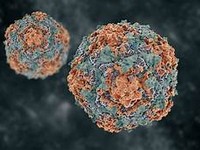
MENSTRUAL PROBLEMS
FOODS THAT HARM
Fatty and highly refined foodsFOODS THAT HEAL
FOODS TO LIMIT
WHO’S AFFECTED
PMS seems to be caused by hormonal changes during the latter half of the menstrual cycle
Other problems include heavy and irregular bleeding, which tends to occur at the beginning and end of a woman’s reproductive years, and missed periods, which is most likely caused by pregnancy
However, the menstrual cycle may also be interrupted by hormonal imbalances related to obesity, diabetes, thyroid disease, a change in contraceptive pills, or an eating disorder such as anorexia nervosa
Women involved in high-level athletic training are prone to menstrual problems, because they lack the critical amount of body fat to maintain adequate estrogen levels
Nutrition Connection
Many of the following suggestions are for PMS, which is the most common complaint, but a doctor, gynecologist, or a dietitian can help address other menstrual issues: Eat a balanced dietEat regular, moderate meals, spaced throughout the day, with whole grains, legumes, vegetables, and fruits
Carbohydrate-rich foods can help by increasing production of serotonin, a brain chemical that regulates mood
Eat foods that have a low glycemic load
Foods with a lower glycemic load such as fiber-rich apples and pears are best because they raise blood sugar levels more slowly, helping to control appetite and possibly cravings
Avoid foods that may exacerbate PMS
Fats, highly refined foods, and caffeinated drinks should be avoided, and sodium intake should be reduced
Alcohol can trigger or worsen many symptoms and so should be avoided in the days before menstrual periods
67% of women lose sleep during their menstrual cycle every month
Doctors attribute this form of insomnia to a rapid drop in the hormone progesterone
Get more calcium
Calcium may help reduce mood disturbances, cramping, and bloating resulting from PMS
Some researchers believe PMS symptoms may be the result of low calcium levels, the symptoms of which are like the symptoms of PMS
Calcium sources include dairy products, fortified soy beverages, canned salmon or sardines, and leafy greens
Add more magnesium
Women with PMS often have low magnesium levels, which may predispose them to PMS-induced headaches and depression
Foods rich in magnesium include sunflower seeds, nuts, lentils and legumes, whole grains, soybeans, figs, and green vegetables
Boost vitamin B6
Foods rich in vitamin B6 may help alleviate PMS symptoms
Vitamin B6 may help stimulate production of serotonin and reduce anxiety and depression caused by PMS
Best food sources are beef, pork, chicken, fish, whole grain cereals, bananas, avocados, and potatoes
However, if you take supplements, do not exceed the upper limit for adults of 100 mg per day
Excess has been associated with nerve damage
Indulge cravings carefully
It’s okay to indulge in a piece of chocolate occasionally, but eating large amounts of sugary foods adds empty calories and can worsen the craving for sweets by disrupting normal blood sugar levels
Opt for healthier, fiber-rich snacks, such as whole grain crackers or fruit, which are metabolized at a slower rate than sweets and also help to prevent the constipation that some women experience as part of PMS
Try herbal teas for painful cramps
Raspberry leaf tea contains a substance that is thought to relax the uterus and ease cramping
Chamomile tea also has antispasmodic action
Try evening primrose oil
This oil, available in capsules and in liquid form, contains an essential fatty acid called gamma linolenic acid (GLA)
This acid blocks the inflammatory prostaglandins that contribute to cramps and breast tenderness
Eat lots of iron-rich foods if you bleed a lot
Although heavy bleeding is rarely a sign of a more serious condition, excessive blood flow may result in a loss of iron, increasing the risk of anemia
An adult woman needs 18 mg of iron daily
Good sources are red meat, legumes, fortified cereals, leafy green vegetables, and dried fruits
To help the body absorb iron better, foods rich in vitamin C should be eaten at the same meal
Beyond the Diet
The following strategies can help address your menstrual issues: ExerciseWomen who exercise regularly are less likely to suffer from PMS
Take a warm bath or use a heating pad
Both actions can help soothe cramps
Take an anti-inflammatory
Prostaglandins, hormonelike substances that cause uterine contractions, play a part in causing menstrual cramps
Aspirin, ibuprofen, and other nonsteroidal anti- inflammatory drugs (NSAIDs) can block prostaglandin production and alleviate menstrual cramps
Problematic periods
A woman who experiences persistently heavy or irregular periods should see a gynecologist to determine if she has a problem requiring treatment
In some instances, painful periods are related to other conditions, such as fibroid tumors or endometriosis
A woman may also be approaching menopause or have weight issues that lead to missed periods
Importance of well balance diet




